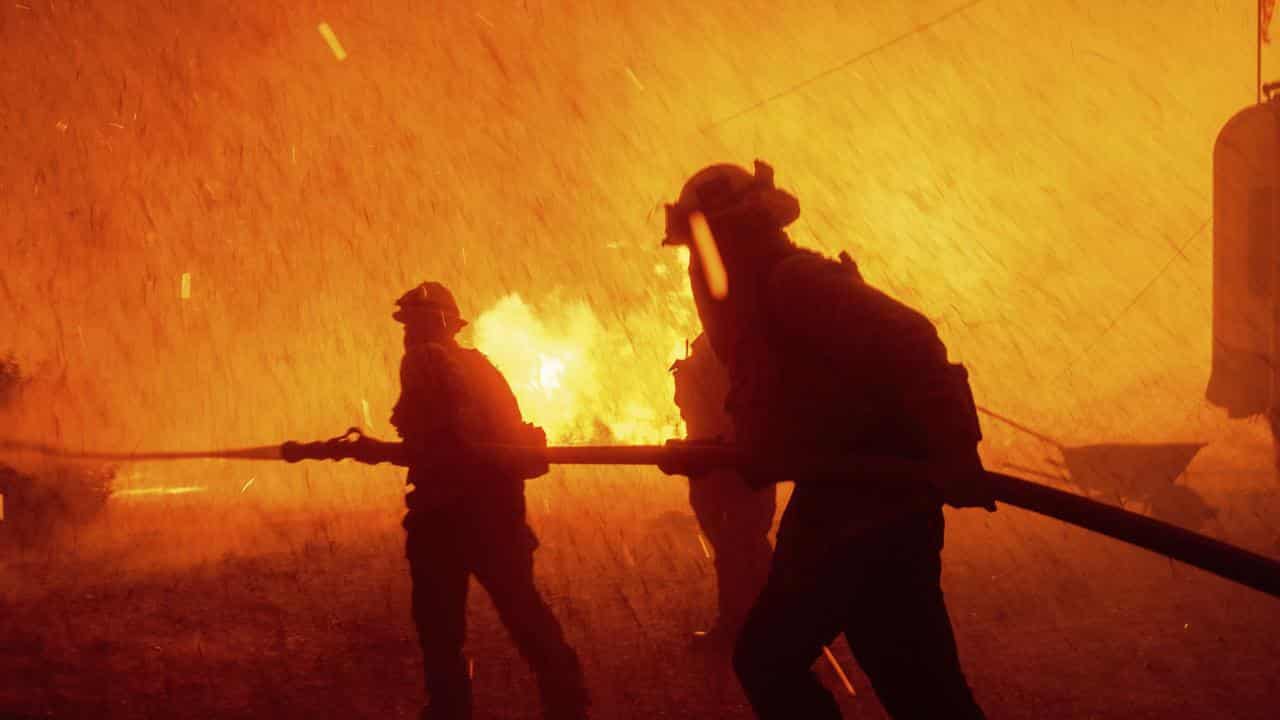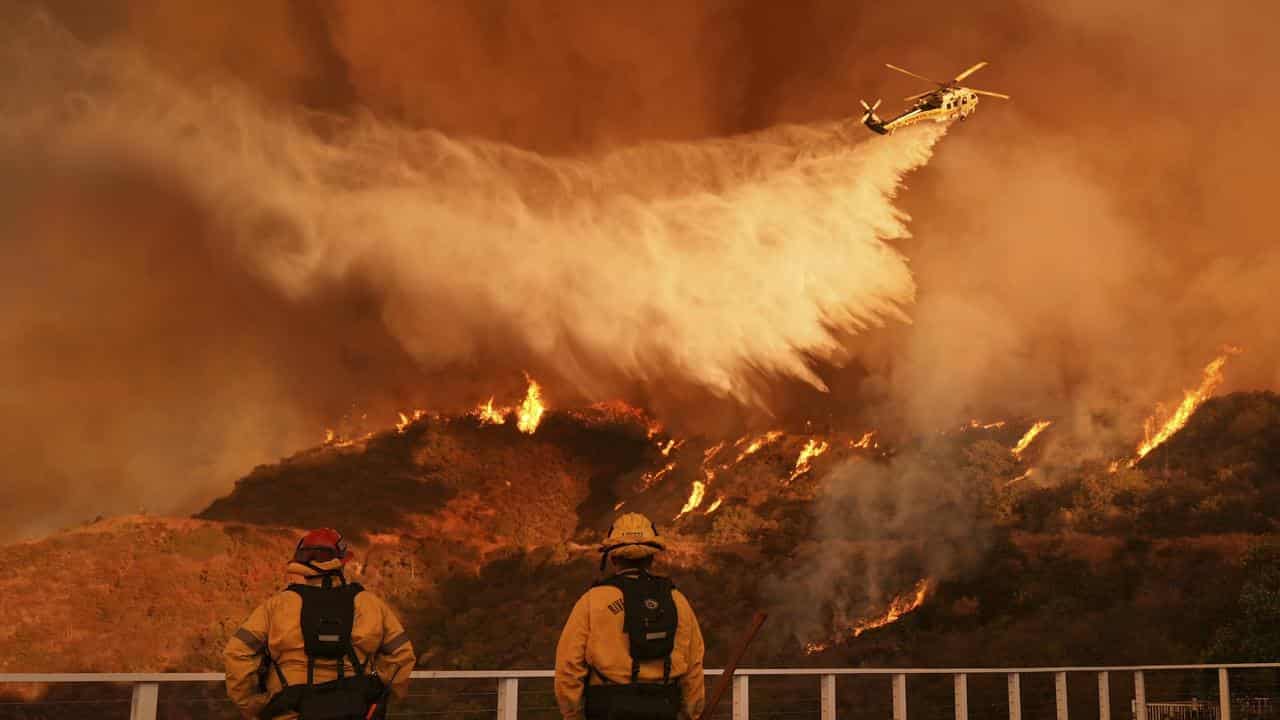
Fires across Los Angeles have shown that American cities and their water systems are not built to withstand wild fires, experts say.
Hydrants trickled. Pumps and treatment plants lost power. Chemical contaminants were sucked into pipes, requiring extensive and costly work.
As wildfires grow more frequent and intense with climate change, and become a greater threat to cities, water utilities are reckoning with the reality that they must build back better.
“People are starting to ask some of these same questions that people asked decades ago for hurricanes and earthquakes,” said Greg Hentschel, vice president of engineering at CST Industries, which makes water storage tanks.
He said building regulations and new engineering standards were needed to toughen the urban environment against those risks.
Better water infrastructure by itself won't protect neighbourhoods from fire, experts say, and many of the ideas are expensive.
But some simple changes could make a huge difference such as remote shut-off valves.
As buildings burn, so do their pipes, which spill water until a utility worker can safely get in to shut off the supply valve.
The delay can be hours or days, all while precious water for firefighting is lost.
Since the Marshall Fire burned more than 500 homes in the city of Louisville, Colorado in 2021, the city has worked to install remote shut-off valves at metres at all the homes that have been rebuilt.
It can "keep ourselves from death by a thousand cuts,” said Kurt Kowar, Louisville's public works and utilities director.
A standard metre costs around $US400 ($A629), while one with remote shut-off capabilities is about twice that.
They require mobile signals to operate, making them a possible vulnerability if telecommunications are lost where a fire is burning, but Kowar says swift action can reduce that risk.
Remote shut-off valves can be installed on main distribution pipes, too, allowing utilities to redirect water more easily to areas that need it.

Emergency water sources are another simple idea for making water available to firefighting helicopters in cities so they don't have to fly to distant reservoirs or the ocean.
They're called “heli-hydrants” — concrete tanks that hold a few thousand gallons of water.
Helicopters can fill up in less than a minute, and the heli-hydrant refills quickly from a gravity-fed tank.
In November, a 5000-gallon heli-hydrant in San Diego County was tapped nearly 30 times by aircraft fighting the 48-acre Garden Fire.
The Rainbow Municipal Water District, a small utility that serves several unincorporated communities, paid around $US200,000 ($A314,540) to install its heli-hydrant in 2021 after the 2017 Lilac Fire burned more than 100 buildings nearby.
Meanwhile, homes and businesses can take steps to protect themselves by storing water on-site for firefighting.
Some commercial properties and large residential properties, such as condos or apartment buildings, are already doing this, Hentschel said.
Those tanks can range from $US100,000 ($A157,270) to millions of dollars depending on size.
Another idea is dedicated pipes for firefighting. Separate, high-pressure pipes that move water— even ocean water if needed — across town to dedicated hydrants that can be tapped for the worst fires have been standard in much of San Francisco for more than a century after the 1906 earthquake sparked widespread fires that burned more than 500 city blocks.
Today, 217 kilometres of pipe are fed by a reservoir and two large tanks, used only for the biggest fires.
The city has a backup reservoir, 70 backup underground cisterns that hold 70,000 gallons each and can pump in seawater if needed.
The regular drinking water system is tapped first for small fires and is sufficient under normal conditions.
“In the case of the Pacific Palisades, a system like this would have done a lot of good," said Steve Ritchie, who oversees the system for the San Francisco Public Utility Commission.
The utility has invested billions to update the system and is expanding it to west and southeast neighbourhoods over the next 15 years for another $US4.5 billion ($A7.1 billion).
Building a comparable system today would be too costly for most communities, but “there are elements of it that you could do that might be very useful,” Ritchie said.
That could include installing dispersed underground cisterns, or a couple of high-pressure lines with dedicated hydrants in high-risk areas.
Backup power for water systems is also vital. Grid-supplied electricity typically powers large treatment plants and pumps that keep drinking water flowing.
When power is cut off, as frequently happens during fires and storms, the water system will quickly fail without the right kind of backup power.
Louisville had generators on critical water infrastructure during the Marshall Fire, but they were powered by the local natural gas utility, which shut off gas citywide as a precaution since it was an additional fire risk.
Without power for pumps — a common vulnerability for towns across the United States — water pressure plummeted.
Officials wound up sending untreated water into the drinking system to restore pressure — saving homes and possibly lives, but contaminating the water system.
Today, they're converting their generators to run on diesel, which can run for several days before refuelling.
Meanwhile, one risk of fires reaching cities is chemical contaminants getting into drinking water.
When toxic chemicals from burned synthetics common in homes reach drinking water pipes, even filtering or boiling water won't make it safe to drink, experts say.
Backflow prevention devices can help solve that, said Andrew Whelton, an engineering professor at Purdue University.
The devices are installed at water metres and only allow water to flow in one direction.




